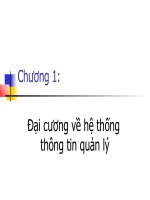BRINGING FARMERS BACK INTO BREEDING - Chapter 1 ppt
Bạn đang xem bản rút gọn của tài liệu. Xem và tải ngay bản đầy đủ của tài liệu tại đây (226.6 KB, 13 trang )
AGROSPECIAL 5
B
RINGING FARMERS BACK INTO BREEDING
E
XPERIENCES WITH PARTICIPATORY PLANT BREEDING AND
CHALLENGES FOR INSTITUTIONALISATION
CONNY ALMEKINDERS & JAAP HARDON (EDS)
WITH ANJA CHRISTINCK, SALLY HUMPHRIES, DIDIT PELEGRINA, BHUWON STHAPIT,
RONNIE VERNOOY, BERT VISSER, EVA WELTZIEN, AND OTHERS.
This publication was prepared with support from the Development Fund, Norway
(www.utviklingsfondet.no
) and the Canadian International Development Research Centre (www.idrc.ca)
Readers are encouraged to make use of, reproduce, disseminate and translate materials from this
publication for their own use. Due acknowledgement, with full reference to the articles and authors is
requested.
Reference:
Conny Almekinders & Jaap Hardon (eds.), 2006. Bringing Farmers Back into Breeding. Experiences
with Participatory Plant Breeding and Challenges for Institutionalisation. Agromisa Special 5, Agromisa,
Wageningen. pp 135
Cover picture: Sonja Siart
©Agromisa Foundation, Wageningen, 2006
www.agromisa.org
ISBN 90-8573-066-X
PREFACE
The purpose of this report is to provide an overview of Participatory Plant Breeding (PPB). It reviews the
approach from both a technical and a social perspective and identifies the challenges for incorporating
PPB in national plant breeding regimes, which we argue is necessary for its scaling-up and future
sustainability. It draws on the concrete experiences of a number of PPB projects in Latin America, Africa
and South East Asia. These are selected to provide a range of different levels of cooperation between
researchers, NGOs and farmers.
PPB can complement the centralised institutional plant breeding regimes that are common to industrial
countries and practiced by the international institutes of the CGIAR and government institutions in
developing countries. When used in combination with increased external inputs (fertilisers, chemical
control of pests and diseases, improved irrigation and practices) these breeding approaches were
successful in raising yields in the more favourable production areas and are generally referred to as "the
green revolution". However, they have been less successful in providing small scale farmers in marginal
agricultural areas with improved varieties. PPB has emerged from the perceived need for more farmer-
oriented approaches to the existing linear process of plant breeding, extension and distribution/marketing
to farmers. This is partly because environmental conditions in the tropics and sub-tropics tend to be much
more diverse, often even within short distances, than they are in most temperate countries. Secondly, it is
recognised that farmer seed systems have a value and strength in coping with such diversity and that
farmers have an inherent capability to select those materials that are most appropriate for their local
requirements. This recognition led to the establishment, in the 1990s, of a number of pilot projects that
involve farmers in various stages of the breeding process. These range from involving farmers in setting
breeding objectives, in testing and selecting breeding materials in various stages of development in their
own fields under different environmental conditions, and ultimately in providing farmers with the skills
and materials to breed their own varieties.
This report reviews the experiences of a range of selected pilot projects with a view to developing more
general insights into PPB: what has worked well, what did not work so well and how PPB approaches
can be improved. These insights are then used as basis for identifying the major challenges likely to be
involved in the scaling-up and institutionalisation of PPB. These questions need to be placed in the
general context of national crop improvement programmes and particularly how they can broaden their
reach so that they also include small resource-poor farmers, especially those in more marginal areas that
have thus far received little benefit from such programmes. The inputs for this review include a number
cases (part two of this document) combined with information from the literature and our own
experiences. The case study material has been provided by individual authors, who are partners in the
various projects described. Some of them also had an input into the overall conceptualisation of this
document. Their cooperation is gratefully acknowledged.
Rather than trying to provide a critical evaluation of PPB, the emphasis of this report is on seeking to
understand the different conditions under which various projects are implemented, how these relate to
broader goals and how these influence the modes of cooperation between the various project
stakeholders. At present PPB projects are generally pilot projects, utilising different approaches, with
little indication about which are most effective and indeed how effectiveness can and should be assessed.
We also ran into a common problem with farmer-managed activities, that is, the scarcity of quantitative
data. We expected to be able compile data regarding actual selection procedures including population
sizes, intensity of selection etc. However in the PPB activities, data are not documented in the same way
and with the same detail as breeders do in conventional programmes. Hence the technical analysis
remains rather descriptive. For this reason we shifted our attention and looked for documentation that
also pays attention to the participation aspect of the experiences.
We hope that this document will contribute to a better understanding of what PPB is all about and widens
interest, particularly amongst plant breeders and policy makers, in regarding farmers as potential and
enthusiastic partners in crop improvement.
Jaap Hardon and Conny Almekinders, Wageningen, June 2006
TABLE OF CONTENTS
PART A: FROM CONCEPT TO PILOT PROJECT AND BEYOND 9
1 Introduction 11
1.1 Setting the Scene 11
1.2 Conventional Plant Breeding compared to PPB 12
2 Methodologies 14
2.1 The technical component 14
2.2 The social component 17
3 Synopsis of the PPB cases 19
3.1 Case studies 19
3.2 Reflection on the cases 23
4 Analysis and discussion of issues emerging from cases 27
4.1 Participation in Breeding 27
4.2 Impact on variety development 29
4.3 Roles of various actors 30
4.4 Empowerment through PPB 31
4.5 Costs and benefits 32
4.6 Lessons from comparing experiences 32
5 Beyond the pilot project: challenges for institutionalisation 35
5.1 Institutionalising farmers’ involvement in plant breeding 35
5.2 Policies, seed rules and regulations 35
5.3 The sustainability of PPB 37
5.4 Conclusion 37
6 References consulted 39
PART B: CASE EXPERIENCES 41
7 Farmers developing their own adapted bean variety with collaboration of a breeder and
NGO-staff: an experience from Pueblo Nuevo, Nicaragua 43
7.1 Introduction: setting the scene 43
7.2 Local production and seed system 44
7.3 Organisational and institutional structures 45
7.4 Methodologies adopted in PPB and farmer participatory (breeding) practices 45
7.5 Results 47
7.6 Reflection on experiences 47
7.7 Institutionalisation 49
7.8 Management of products of PPB 50
7.9 Outlook 50
7.10 References and details of the project 50
8 Working with Farmer Research Committees in Participatory Bean Breeding in
Honduras 53
8.1 Introduction: setting the scene 53
8.2 Local production and the seed system 55
8.3 Organisational and institutional structures 55
8.4 Methodologies adopted in PPB and farmer participatory (breeding) practices 56
8.5 Results 60
8.6 Reflection on Experiences 61
8.7 Institutionalisation of PPB 62
8.8 Management of the products of PPB 62
8.9 Outlook 62
8.10 References 63
9
Enhancing farmers’ access to sorghum varieties through scaling-up Participatory Plant
Breeding in Mali, West Africa 65
9.1 Introduction: setting the scene 65
9.2 Local production and seed system 66
9.3 Organisational and institutional structures 68
9.4 Methodologies used for farmer participatory breeding 69
9.5 Results 72
9.6 Reflection on experiences 74
9.7 Institutionalisation 75
9.8 Management of PPB products 75
9.9 Outlook 76
9.10 References 76
10 Consolidating Farmer's Roles in Participatory Maize Breeding in Nepal 77
10.1 Introduction 77
10.2 Methodology 79
10.3 The breeding approach 80
10.4 Results and lessons 82
10.5 Conclusion 84
10.6 References 86
11 Participatory Plant Breeding in Guangxi, South-west China 87
11.1 Introduction 87
11.2 Local Maize Production, and the Formal and Farmers’ Seed Systems 88
11.3 Organisations 88
11.4 Methodologies adopted in participatory (maize breeding) practices 89
11.5 Reflection on experiences 91
11.6 Institutionalisation 92
11.7 Management of products of PPB 92
11.8 Outlook 93
11.9 References 93
12 BUCAP and CBDC: experiences and challenges of a Southeast Asian road to farmer
plant breeding 95
I Set up and overview of the programmes 95
12.1 Why? 95
12.2 Where? 96
12.3 Who and What? 96
II Country Cases Bucap and CBDC 98
13 CBDC Philippines: Boholano farmers’ experiences on red rice development 99
13.1 Introduction 99
13.2 Problems encountered 100
13.3 Conclusion 101
14 BUCAP Bhutan: the case of rice 103
14.1 Introduction: setting the scene 103
14.2 Local production and seed system 103
14.3 Organisational and institutional structures 106
14.4 Methodologies adopted in PPB and farmer participatory breeding practices 106
14.5 Reflection on experiences 108
14.6 Institutionalisation 109
14.7 Management of products of PPB 109
14.8 Outlook 109
14.9 References 110
15 BUCAP Lao: the case of glutinous rice 111
15.1 Introduction 111
15.2 Local production and seed system 111
15.3 Organisational and institutional structures 112
15.4
Methodologies adopted in PPB and farmer participatory (breeding) practices 112
15.5 Results 112
15.6 Reflection on experiences 113
15.7 Institutionalisation 113
15.8 Outlook 113
16 BUCAP Vietnam: the case of Rice in Hoa Binh Province 115
16.1 Introduction: setting the scene 115
16.2 Farmers’ experiences in seed production 116
17 PEDIGREA: Using the farmer field school concept and integrating marketing issues in
participatory plant breeding of rice and local vegetables 117
I The program set up and overview 117
17.1 Introduction: setting the scene 117
17.2 Local production and seed systems 118
17.3 Organisational and institutional structures 119
17.4 Methodologies adopted in PPB and PVS 120
17.5 Results so far: participation, activities and improved rice and vegetables 121
17.6 Constraints and challenges 123
17.7 Reflection on experiences 123
17.8 Institutionalisation 124
17.9 Management of products of PPB 125
17.10 Outlook 126
17.11 References and details of the project 126
II Three PEDIGREA Cases 127
17.12 The breeding and selection activities of two farmer-rice breeders in Mindanao, Philippines 127
17.13 Gourd breeding by FFS groups in Indonesia 131
17.14 Breeding Pumpkin and Wax gourd by FFS groups in Cambodia 132
GLOSSARY OF TERMS, ABBREVIATIONS AND ACRONYMS 135
PART A: FROM CONCEPT TO PILOT PROJECT
AND BEYOND
JAAP HARDON AND CONNY ALMEKINDERS, WITH ANJA CHRISTINCK, SALLY
HUMPHRIES, DIDIT PELEGRINA, BHUWON STHAPIT, RONNIE VERNOOY, BERT VISSER
AND
EVA WELTZIEN
11
1 INTRODUCTION
1.1 Setting the Scene
In the nineteen sixties and seventies a marriage of institutional plant breeding and high input agriculture
appeared to offer the opportunity of alleviating the spectre of endemic food shortages in many parts of
the world. This development was spearheaded by the International Agricultural Research Institutes,
established and coordinated by the Consultative Group on International Agricultural Research (CGIAR).
In concert with national agricultural research and plant breeding programmes, significant increases in the
productivity of major food crops (notably rice, wheat, corn and a number of food legumes) were realised
in many developing countries. This achievement should not be underestimated. However, improved
technology was no panacea. Replacing local varieties by 'modern' varieties that were more responsive to
inputs and the provision of quality seed generally worked well in more fertile agricultural areas. But, for
the very environmentally diverse and stress prone marginal areas, blanket recommendations and a one-
size-fits-all technology was not an appropriate strategy. To cope with this problem, plant breeders in
different parts of the world started to involve farmers in target environments in setting breeding
objectives and subsequent selection and testing of breeding materials (both on-station and/or on-farm).
The objectives were to better satisfy farmers' needs (driven by their diverse ecological environments and
household requirements) and improve local adaptation (Ceccarelli et al.; 2001; Sperling et al, 2001,
Witcombe et al. 2002; Weltzien et al., 2003).
At the same time a number of NGOs including CET-CLADES (Latin America) and SEARICE (SE-Asia)
argued for a re-validation of traditional agricultural systems and practices, to widen the scope of
development beyond the high potential areas, and to increase sustainability and cost-effectiveness. They
stressed that farmer seed systems were (and are) still the main sources of seed, including modern
varieties. In many countries these farmer seed systems provide a more reliable, robust and time-tested
seed supply system than institutional seed systems This re-validation also emphasised the role of genetic
diversity within farmers' fields, especially, but not only, in the more marginal areas This diversity
constitutes an important resource for adaptation to local conditions of spatial and temporal environmental
stress and for meeting the culinary qualities and specific purposes desired by households. The role of
farmers actively managing and continuing to develop diversity through their seed systems was
emphasised. This contributed to greater recognition of farmer seed systems as an essential component
within the national seed supply that should be strengthened in concert with, rather than replaced by,
national public and/or private seed production and distribution. These views led to increasing levels of
farmer participation in crop improvement programmes. An important contribution in the development of
such approaches was provided by the Keystone International Dialogue Series on Plant Genetic Resources
(see box 1).
Hence Participatory Plant Breeding (PPB) is an approach that evolved from a number of different origins,
with differing perspectives that came together at a timely moment. As broadly defined by Vernooy
(2003) PPB refers to approaches that involve close collaboration between researchers and farmers, and
potentially other stakeholders, to bring about plant genetic improvements within crops. The aim, most
simply stated, is to ensure that the research undertaken is relevant to farmers’ needs. An early vision of
what PPB could look like and how it could contribute to farmers’ well-being was subject of a workshop
in Wageningen, the Netherlands, jointly organised by some of the partners in the Keystone Dialogue
series; the International Development Research Centre (IDRC, Ottawa), the International Plant Genetic
Resources Institute (IPGRI, Rome), the Food and Agriculture Organisation (FAO, Rome) and the Centre
for Genetic Resources, the Netherlands (CGN, Wageningen) - (Hardon, 1995).
There is now a wide variety of projects in different parts of the world that fall under the broad heading of
PPB. The CGIAR System-wide Programme on Participatory Research and Gender Analysis has made a
major contribution to the recognition and adoption of PPB within the CG institutes, national breeding
programmes and NGOs. In 1989 this Programme had already identified 80 PPB projects within and
outside the CGIAR System. Since then many others have been initiated. Later, with donor support, they
launched a Small Grant Programme to stimulate PPB research.
12
Influential initiatives have included those with barley in Syria and other Mediterranean countries
(Ceccarelli and collaborators), with rice in Nepal and India (Witcombe, LIBIRD and Indian partners),
with millet in Rajastan, India (Weltzien and collaborators), Preduza (Andean Region breeders with
support from WUR, Netherlands), the Honduran and Cuban experiences gained through the Meso-
American Programme, and the Chinese maize experience led by the CCAP and GMRI. These
Programmes have given rise to published experiences in refereed journals mainly by those involved in
the formal aspects of research. By contrast NGO-managed projects, experiences and views, such as those
of SEARICE, CIPRES and FIPAH in SE Asia, Nicaragua and Honduras, respectively (see this
document) are largely only available in the grey literature of project reports and often only in local
languages. While some of the achievements of these NGO-managed projects, have been formally
published (see references this document), many of their acquired experiences and knowledge are only
available in project reports and local languages. These experiences are therefore less accessible to
institutional plant breeders. This partly explains the relatively low level of adoption of more farmer-
managed approaches by formal plant breeders. However, it is also fair to say that many plant breeders
were, and often remain, sceptical of PPB as a breeding approach. They tend to view more farmer
participation in crop improvement as socio-politically attractive but at the cost of the scientific rigour that
they consider essential to get “real” progress.
1.2 Conventional Plant Breeding compared to PPB
The dividing line between modern agriculture that depends on a commercial/institutional seed industry
and traditional agriculture that relies on farmer seed systems is diffuse and sometimes difficult to define.
This is also true of the boundaries between centralised institutional plant breeding and PPB. Essentially
plant breeding involves obtaining improved planting materials from genetically variable populations in
B
ox 1.1.The Ke
y
stone Dialogue, the CBD and the CBDC project
The Keystone International Dialogue Series on Plant Genetic Resources provided an input into the
1992 UNCED Conference in Rio de Janeiro and the drafting of the Convention on Biological
Diversity (CBD). The objective was to balance concern about natural biological diversity,
highlighted in the early the drafts of the CBD, with additional attention to the importance of the
conservation and use of Plant Genetic Resources for Food and Agriculture (PGRFA). Those
involved in the Dialogue (who represented a wide range of interests, including industry, NGOs,
government institutions and the FAO) considered the latter aspect to be somewhat neglected. In the
course of the Dialogue, the need to consider in situ conservation of PGRFA was directly linked to
on-farm use of genetic diversity. The view was that farmers could only be expected to play a role i
n
conservation if this would give them access to better planting materials. This led to a revaluation o
f
the age-old practice of farmers working in farmer seed systems and developing landraces adapted to
a wide range of variable environments. This system dominates in environments not covered b
y
formal plant breeding and represents a major source of PGRFA presently available. In order to
benefit farmers in those regions from progress in research and also contribute to in situ conservatio
n
objectives, it was suggested that institutional plant breeding should also adopt and encompass the
concept of farmer Participatory Plant Breeding (Hardon, 1995). This concept formed the basis of the
subsequent Community Biological Diversity Development and Conservation Programme (CBDC),
the basic objective of which was to explicitly acknowledge and build upon the inherent ability o
f
farmers to select and develop planting materials suitable to their conditions and requirements in
a
way that was complementary to formal plant breeding. It was argued that involving farmers woul
d
increase the effectiveness of plant breeding and broaden farmers’ access, especially in more
marginal environments, to research that had hitherto neglected their requirements. The CBDC
Programme provided a rationale for a variety of projects, already existing and established over the
following years, which directly involved farmers in crop improvements. These Programmes
followed on from existing on-farm testing of experimental new varieties (Participatory Variet
y
Selection - PVS) and increasingly involved farmers in the whole process of plant breeding
(Participatory Plant Breeding - PPB).
13
the most efficient way. This largely depends on the ability of breeders, be they formal plant breeders or
farmers, to recognise differences among the traits of plants that may have economic value. Improvement
entails not just higher productivity but also developing varieties that better satisfy user/consumer
requirements and provide higher yield security through resistance to diseases and better adaptation to the
vagaries of local environments (drought, cold, heat, wind etc.).
NGOs involved in this sector have often stressed the inherent skills and judgement of farmers to select
superior plants and, in some instances, have seemed to under-value established genetics and breeding
technology. They sometimes see plant breeding as an art as opposed to plant breeding as both an art and
as science. Such views were held by some of the partners in some of the first CBDC projects. However,
NGOs now more widely accept that farmers can benefit from formal plant breeding by learning about
effective population sizes, intensity of selection in various generations of breeding, mass selection and
line selection, differences between self-pollinating and largely cross-pollinating crops and the
consequences of these issues for the most appropriate breeding procedures. Hence the participatory in
PPB refers to forms of co-operation between formal plant breeders and farmers in plant breeding in a
manner that is appropriate to local conditions and the needs of farmers and their -seed systems. Whether
PPB includes on-farm or local testing of finished varieties with participation of farmers - referred to as
Participatory Variety selection (PVS) - is a matter of definition (see box 3). PVS is usually also used to
identify farmer preferences and take these as a guide for subsequent breeding and, as such, can be viewed
as a form of PPB.
There are a number of reasons why small-scale resource poor farmers and their farmer seed systems
(FSS) are the main target of PPB.
Technology arguments. To develop better adapted varieties for the marginal complex environments
and, in also some cases, for highly productive environments.
• Plant breeders have become increasingly aware that their initial primary concern with yields was
not always sufficient to guarantee broad adoption by farmers. It has became apparent that breeding
objectives need to incorporate other criteria, such as local consumption preferences. This has led to
farmer-participatory evaluation aimed at establishing what additional characteristics were required,
such as taste, colour /appearance and other household requirements, e.g. ease of cooking and of
storage.
• When plant breeding started to address a larger diversity of environments, Genotype by
Environment (GXE) interactions also needed increased attention (Ceccarelli 1989, Hildebrand
1990, Simmonds 1991). This led to a range of options for testing breeding materials under local
conditions during the breeding programme and (differing levels of) farmers’ involvement in
selection processes.
• There was also recognition of the need to complement formal breeding by focusing on those crops
and environments not covered by institutional research. This includes many minor crops which are
highly important in some localities.
Empowerment and equity arguments.
• Farmers need to be empowered in order to safeguard their interests and agrobiodiversity. Trade
liberalisation favours bulk production for international markets and threatens to further marginalise
the economic position of small resource-poor farmers. NGOs have been particularly active in
highlighting concerns about farmers’ loss of control over their seed systems This led to an
awareness of the need to empower farmers, promote self-reliance and strengthen their role as
partners in breeding rather than as mere recipients of new varieties and seeds. This view was
supported by frequent inadequacies of centralised seed production systems in delivering seed to the
right places at the right times.
• Equity arguments are based on the fact that small-scale farmers in marginal areas are amongst the
poorest in the world and have so far received little benefit from agricultural research and
development and that greater efforts were needed to develop technologies that were better adapted
to improving their livelihoods.
A final important element related to equity is concern over the question of the ownership of genetic
resources and, in particular, of farmer varieties. The challenges that this question poses to PPB are
addressed in the last chapter of this first section.









